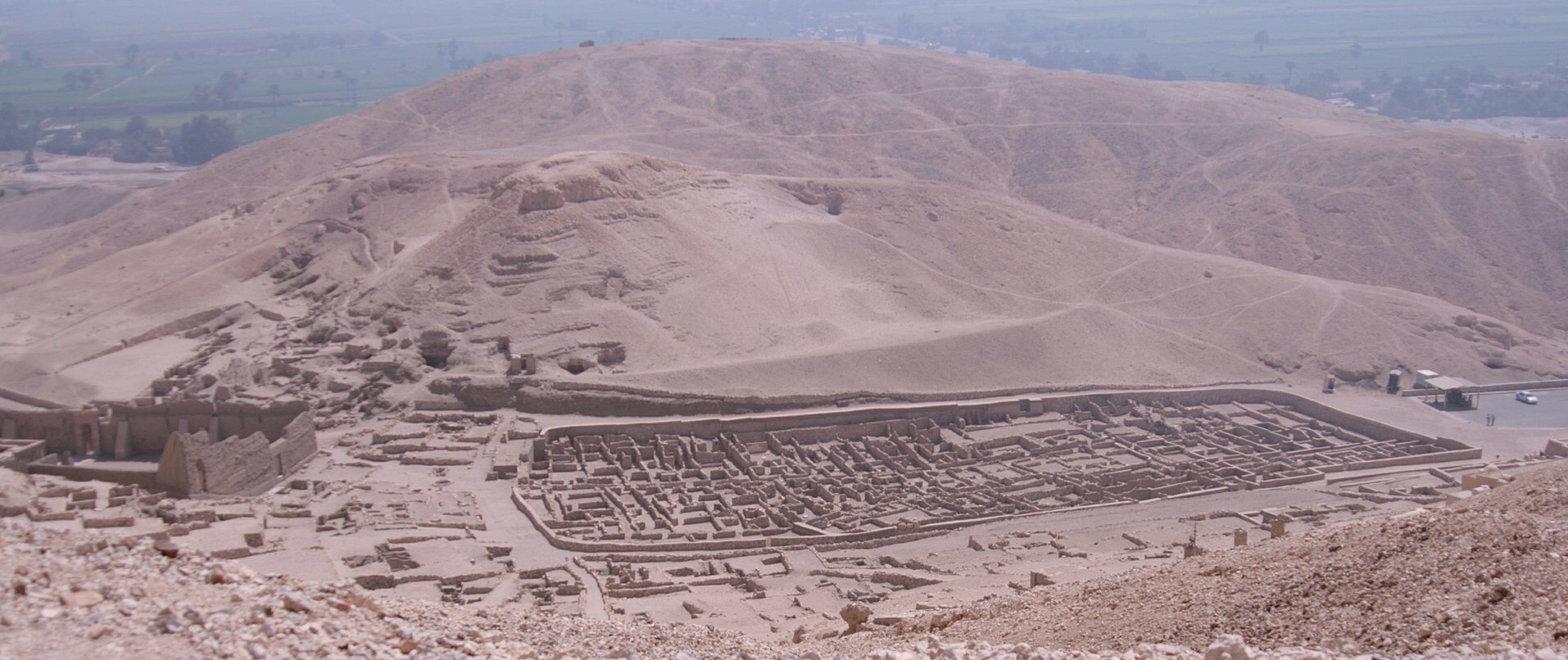This is the paper I wrote for Archaeology B, describing how the Egyptian New Kingdom workers’ village of Deir el-Medina, the desert home of the men who built the tombs in the Valley of the Kings, was provided with water. Basically, it was all carried in on donkey back (although an attempt was made to dig a well):
The workers who built the tombs in the Valley of the Kings lived for many generations with their families in a village that today we call Deir el-Medina. The families of up to 120 craftsmen lived in the village, before it was abandoned, after the cessation of the construction of new royal tombs in the Valley. Deir el-Medina was built away from the Nile and the cultivation, and out in the desert.
Perhaps to be close to their work, perhaps to provide security so outsiders would not be able to locate the royal graves. This paper explores how water would have been supplied to the workers and their families.
Parallels have also been drawn with the workers’ village at Amarna, which may have served a similar role and faced similar supply problems.
There were two possibilities for providing water, bringing it in, most conveniently on donkey back, or digging wells. The former has been much discussed, and there is literary evidence. The latter is more controversial, and relies mainly on the archaeology. While most scholars believe the so-called Great Pit never reached water before it was turned into the garbage dump where the ostraca letters of the villagers were uncovered, some do believe water was found.
Recent research has also revealed that a secondary branch of the Nile may have been much closer to Deir el-Medina than previously believed.

